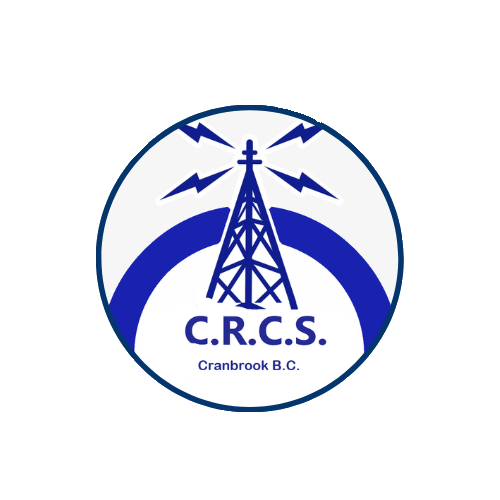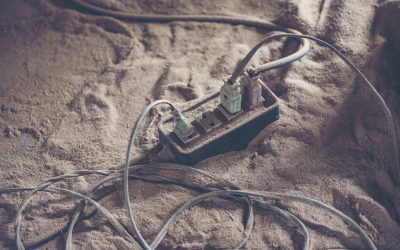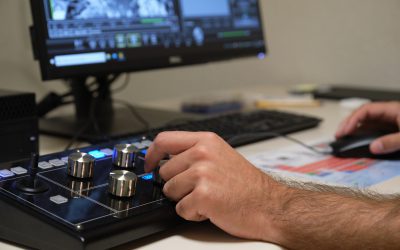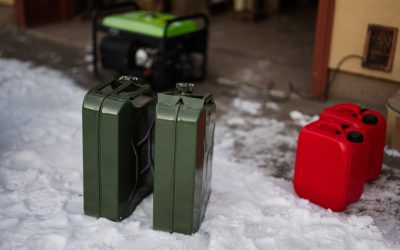When you first get your amateur radio station up and running, one of the most frustrating things you may encounter is hearing strong signals suddenly vanish into static or weak signals becoming nearly impossible to copy. At first glance, this can look like poor propagation or faulty equipment. In reality, you might be dealing with something called desense—a problem that can cripple your station’s performance if left unchecked.
In this guide, we’ll answer the big question: what is desense, explain why it happens, outline the common signs to watch for, and provide methods for identifying and correcting it in your setup.
What Is Desense?
The word desense is short for desensitization, a condition where a receiver’s sensitivity is reduced because of strong, unwanted signals. In other words, your receiver is overwhelmed, making it deaf to weaker signals you actually want to hear.
In amateur radio, desense most often happens in setups where transmit and receive systems operate close together in frequency, location, or physical space. Common situations include:
-
Repeater stations where the transmitter and receiver are only a few kilohertz apart.
-
Portable or contest stations running multiple radios at once.
-
Field setups where transmit antennas are close to receive antennas.
-
Mobile rigs with high-power transmitters near sensitive receivers.
Instead of hearing that weak DX station, your receiver hears noise, distortion, or silence—all because it’s being “blinded” by energy it can’t handle.
Why Does Desense Matter?
If you’re wondering why desense deserves attention, consider this: radio is about listening as much as it is about transmitting. A station suffering from desense will:
-
Miss weak DX signals.
-
Struggle in contests or nets where copy matters.
-
Perform poorly in emergency communications when every word counts.
-
Cause operator frustration, wasted time, and missed QSOs.
For repeaters, desense is even more critical. A repeater that suffers from desense can’t effectively serve its users. Strong incoming signals may not trigger the repeater, and weaker ones will vanish into noise. A desensing repeater is essentially broken.
Understanding what is desense and spotting it early saves both your sanity and your station’s usefulness.
Common Causes of Desense
Several technical factors contribute to desense, and most fall into one of these categories:
1. Transmitter Overload
A nearby transmitter, even if it’s your own, can swamp the front end of a receiver. High RF energy “bleeds” into the receiver’s circuits, overwhelming them.
2. Harmonics and Spurious Emissions
Transmitters don’t always produce a clean signal. Harmonics, intermodulation products, or spurious emissions can land right in the receiver’s passband.
3. Inadequate Filtering
Without band-pass or notch filters, your receiver may be exposed to strong out-of-band signals it can’t reject.
4. Antenna Proximity
When transmit and receive antennas are too close together, coupling occurs. The transmit antenna effectively “pumps” energy into the receive antenna.
5. Poor Isolation in Duplexers
In repeater setups, the duplexer is designed to isolate transmit and receive paths. If it’s poorly tuned, desense will occur.
Signs of Desense in Your Shack
How do you know if you’re dealing with desense? Here are key symptoms to watch for:
-
Strong signals appear weak or vanish. You know a station should be booming in, but it sounds faint or noisy.
-
Increased noise floor. The background noise level rises dramatically, reducing sensitivity.
-
Reproducible interference. The problem occurs every time you transmit on a nearby band or frequency.
-
Repeater fails to repeat. Signals that should trigger the repeater either don’t, or the repeater transmits a noisy, distorted output.
-
Intermittent performance. The problem may change depending on band, power level, or antenna configuration.
If these sound familiar, you may already be experiencing desense.
How to Identify Desense
Knowing what is desense is only step one—you also need to confirm whether it’s happening in your setup. Here’s how:
1. Conduct a Quiet Receiver Test
With no local transmitters running, tune your receiver to a frequency with known activity. Record its performance. Then, transmit on a nearby frequency and note if the receiver sensitivity drops or if noise increases.
2. Use a Dummy Load
Replace your receive antenna with a dummy load. If the noise or interference disappears when transmitting, antenna coupling is the likely culprit.
3. Check with a Field Strength Meter
Measure RF energy around your receive antenna while transmitting. High readings suggest excessive coupling between antennas.
4. Insert Filters
Add a band-pass or notch filter to your receiver input. If performance improves, filtering was lacking.
5. Test at Different Distances
Physically move your transmit and receive antennas further apart. Improvement indicates proximity was a factor.
Practical Solutions to Combat Desense
The good news is that desense is not an unsolvable problem. Depending on the source, here are some solutions:
1. Improve Filtering
-
Use band-pass filters to allow only the desired frequency range.
-
Add notch filters to remove offending signals.
-
In repeater systems, verify duplexer alignment with professional test equipment.
2. Increase Antenna Separation
-
Horizontal separation (moving antennas apart on the same tower) helps.
-
Vertical separation (mounting one antenna above another) is often even more effective.
3. Shielding and Isolation
-
Use coaxial chokes to block common-mode currents.
-
Place receivers in shielded enclosures if stray RF is leaking in.
4. Improve Transmitter Cleanliness
-
Use low-pass filters to suppress harmonics.
-
Verify your transmitter isn’t producing excessive spurious emissions.
-
Keep equipment properly maintained and tuned.
5. Check Duplexer Performance
-
For repeater owners, have a qualified technician sweep and retune the duplexer.
-
Upgrade to higher-quality duplexers if the current one can’t provide enough isolation.
Preventing Desense in Future Builds
Rather than fixing desense after the fact, it’s better to design your station to avoid it from the start:
-
Plan antenna placement carefully.
-
Incorporate filters early. Even simple low-pass filters make a difference.
-
Invest in quality duplexers. For repeaters, don’t cut corners.
-
Test regularly. Run periodic quiet receiver tests to confirm sensitivity hasn’t been compromised.
Tools That Help Identify and Solve Desense
While some fixes are straightforward, the right tools can save you hours of guesswork:
-
Spectrum analyzers – Show exactly where spurious emissions or interference occur.
-
Field strength meters – Reveal RF hot spots near antennas or equipment.
-
Service monitors – Essential for repeater maintenance and duplexer alignment.
-
Dummy loads – Rule out antenna coupling as a cause.
Even basic tools like SWR meters and portable receivers can go a long way in diagnosing issues.
Why Clubs Play a Key Role
One ham with desense can often feel stuck, but a club environment changes the game. Clubs like CRCS pool knowledge, equipment, and experience. A member might bring in a spectrum analyzer or share past troubleshooting strategies.
When diagnosing desense, a second set of ears—or an entire net of ears—can spot problems faster than one operator working alone.
So, what is desense? It’s the loss of receiver sensitivity caused by strong, unwanted signals. It sneaks into shacks, repeaters, and portable setups, often masquerading as bad propagation or faulty gear.
Identifying desense means paying attention to weak signals, rising noise floors, and degraded repeater performance. Fixing it requires methodical testing—using dummy loads, filters, antenna spacing, and clean transmitters.
At CRCS, we encourage every ham to understand the fundamentals of desense. The more you know, the better you’ll maintain reliable communications. Don’t let your station go deaf—stay alert, test often, and reach out to your local club for help if you need it.




